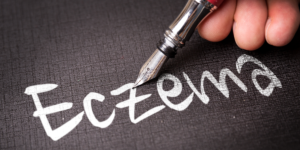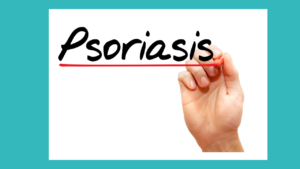So, you bid farewell to your pimple but it left you a souvenir aka dark mark. We may not be able to heal the invisible scars on your heart but we’ll try to help you heal these superficial scars.
Unlike acne, hyperpigmentation can be quite stubborn and could linger around for a longer time. But don’t give up hope just yet, for where there is a will there’s a way! And this post may just be your way…
Before we get into it, a quick Biology lesson so that you don’t get all lost and confused:
-
- Melanin is the hormone responsible for imparting color to the skin and hair.
- Melanin is produced by skin cells called melanocytes. Approximately 5-10% of cells in the epidermis are melanocytes.
- Melanocytes contain an enzyme called Tyrosinase which is responsible for the first step in melanin production.
- Tyrosinase converts the amino acid tyrosine into dopaquinone which undergoes a series of reactions to produce melanin. Voila!
Have we lost you? Don’t break up with us just yet…. We promise, it only gets easier from here on… Now that we got that out of the way let’s jump into it.
When Melanin production by the melanocytes shifts into higher gear it results in deeper/darker skin color, I. E., hyperpigmentation. The following factors contribute to its overproduction:
- Inflammation
- Hormones; estrogen stimulates melanin production; this is why women on birth control medication may struggle more with hyperpigmentation. Also, let’s not forget that puberty is accompanied by changes in the hormonal levels. Sigh!
- Blue light (yes that includes the device you’re reading this on right now!)
- Trauma (that popped pimple comes back to haunt you!)
- Genetic predisposition
- Richer skin tones are more prone to hyperpigmentation as the melanin content is already high.
- Unprotected & Prolonged exposure to the sun (UVA & UVB rays).
In contrast, Hypopigmentation is a consequence of reduced or absence of melanin production by the melanocytes (due to their destruction or damage). This causes the skin to lose its color resulting in the appearance of lighter or white patches on the skin (as in the case of vitiligo).
Types of Hyperpigmentation:
- PIH (Post-Inflammatory Hyperpigmentation):
As the name suggests this form occurs after inflammation.
When the skin heals from an injury (burns, rashes, cuts, abrasions, etc.) or from acne, it leads to increased melanin concentrations in these healed areas, thus producing brown/dark spots or patches. This is referred to as PIH.
- PIE (POST-INFLAMMATORY ERYTHEMA):
These are the red/pink marks left behind by acne or skin trauma or even over exfoliation. It is associated more with damage to capillaries near the surface of the skin rather than excess melanin (as in the case of PIH).
However, the treatment for PIE & PIH is more or less the same.
- Sunspots:
Scientifically termed SOLAR LENTIGINES. This is the most common form of hyperpigmentation. Most of us have had our share of these dreadful dark spots as a consequence of long-term unprotected sun exposure.
- Melasma:
Melasma is predominant during pregnancy. This blotch-like form of hyperpigmentation is related to changes in the hormonal levels (namely estrogen and progesterone). It can also be induced or exacerbated by infrared radiation or UV exposure.
- Freckles or Moles:
No, not everyone can flaunt their freckles like Megan Markle.
These may be genetic or due to prolonged sun exposure (usually during childhood). Here, specific areas of the skin fall victim to excessive melanin production (kind of in a cluster formation).
Source: Ellemes/canva
Note: The change in skin texture like the pits or indents created post-pimple are referred to as Scarring and is associated more with collagen production.
Treatment:
Source: Canva/Freepik
Hyperpigmentation is tricky to treat. Hence, prevention is best.
- Religiously apply sunscreen preferably with SPF 50 or at least SPF 30 (reapply every 2 hours!)
- Reduce the amount of time you spend under the sun (especially during peak hours, 11am to 4pm)
- Wear hats and gloves.
Whether its sunny or cloudy; Whether you’re outside or inside your home. Unless you live in a cave or a deep ocean trench where sunlight is but a concept, there is no valid excuse for skipping sunscreen.
Other treatments include topical medicated or Over-the-counter products. Needless to say, there are many in-office treatments available to combat hyperpigmentation like chemical peels, microdermabrasion and lasers. Speak to your dermatologist to find the best option for you.
Top 3 recommended ingredients to combat hyperpigmentation:
- Vitamin C (ascorbic acid):
Vitamin C is the king of antioxidants. It targets hyperpigmentation, improves elasticity, helps to brighten the overall skin tone and provides protection from free radical damage.
Tip: Vitamin C & sunscreen are sort of a power couple. This combo has invincible sun protecting power.
- Azelaic acid:
It is a compound that is naturally found in grains. It has anti-inflammatory and antibacterial properties so it’s great for treating acne. It blocks the tyrosinase enzyme thus preventing excess melanin production. It also reduces redness and discoloration thereby evening out skin tone. However, it doesn’t affect the normal melanocytes and prolonged use does not lead to ochronosis (blue-black/gray blue pigmentation). So, a win-win situation!
- AHAs:
This includes Glycolic acid and Lactic acid. Glycolic acid is smallest of the AHAs so it can penetrate into the skin well, it is obtained from sugarcane. On the other hand, Lactic Acid is obtained from milk & milk products. Both of them are excellent exfoliators that help to dissolve the top layer of dead skin cells to reveal a more even and brighter complexion underneath.
Note: AHAs are to be used only at night and just 2-3 times a week. AHAs make the skin more vulnerable to sun damage hence sunscreen application is crucial.
- 2-4% hydroquinone is also commonly used. It blocks the melanin producing enzyme tyrosinase. It essentially is a bleaching agent and it is advised to apply it only on the affected areas. Again, sunscreen application is absolutely essential or else you’ll just be undoing all the progress. However long-term use may result in ochronosis.
Top 3 recommended natural products to combat hyperpigmentation:
Source: Canva/Freepik
- Wheatgrass:
Apart from avoiding the sun, another noteworthy point is to keep the temperature of the skin low. This helps to suppress melanocyte activity.
Wheatgrass is super chill (pun intended)! It’s cool nature not only helps to calm and sooth irritation but also brings down body and skin temperature thereby reducing melanin production.
Tip: Mix Neutralise Naturals’ wheatgrass powder with rose water and apply it as a face pack. Rinse after 20-30 mins. You can also freeze it in an Ice cube tray to give yourself an at home cryotherapy.
- Buttermilk:
Buttermilk consists of Lactic acid which helps to exfoliate the skin without drying it out. It’s great for getting rid of tans too.
Tip: Apply it directly onto the skin and let it sit. Rinse after 10-15 mins.
- Tomato:
The natural acids in the tomato helps maintain the skin’s pH balance. Tomatoes are packed with potent antioxidants like Vitamin C and lycopene. Do we need to say anything more?
Tip: Simply take a slice and massage it well onto your skin or tomato juice will also do the trick. Let it sit for awhile before rinsing it off. Repeat at least 5 times a week.
We said 3 but when we’re talking about hyperpigmentation, it would be a sin not to mention this next natural remedy.
- Potato:
It has natural bleaching agents like the enzyme catecholase which helps to control excess melanin production. Potatoes also contain Azelaic acid and vitamin C. They are also effective in treating burns.
Tip: Finely grate a potato and apply it by massaging onto the skin (along with the juice), completely covering the face. Let it sit for 30 mins or until it has dried well. Yes, this one can get kinda messy, but it’s totally worth it!
Parting tip: In order to filter out blue light, look for the ingredient “Iron Oxide” in sunscreens. Tinted sunscreens usually have it.
References:
- Skin melanocytes: biology and development
Mirosława Cichorek, Małgorzata Wachulska, Aneta Stasiewicz, and Agata Tymińska
- A comprehensive review on tyrosinase inhibitors
Samaneh Zolghadri, Asieh Bahrami, Mahmud Tareq Hassan Khan, J. Munoz-Munoz, F. Garcia-Molina, F. Garcia-Canovas, and Ali Akbar Saboury
- Temperature regulates melanin synthesis in Melanocytes
Dong-Seok Kim et al.Arch Pharm Res 2003 Oct.
- Management of hyperpigmentation: Current treatments and emerging therapies
Avni Nautiyal, Sarika Wairkar




Hi,
We’re just wondering if you’d be interested in growing your Instagram followers?
We run an Instagram growth service, which increases your number of followers both safely and practically.
1. Organic Growth: We prioritize long-term growth through genuine connections.
2. Targeted Followers: We focus on attracting followers who care about your niche.
3. Engaged Community: Our strategies encourage likes, comments, and shares.
4. Forget about bots and fake accounts. We use safe, manual strategies to ensure your audience is targeted and authentic.
If you’re interested in learning more don’t hesitate to get in touch.
Kind Regards,
Megan